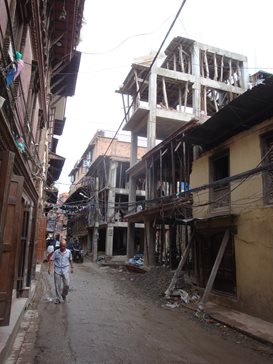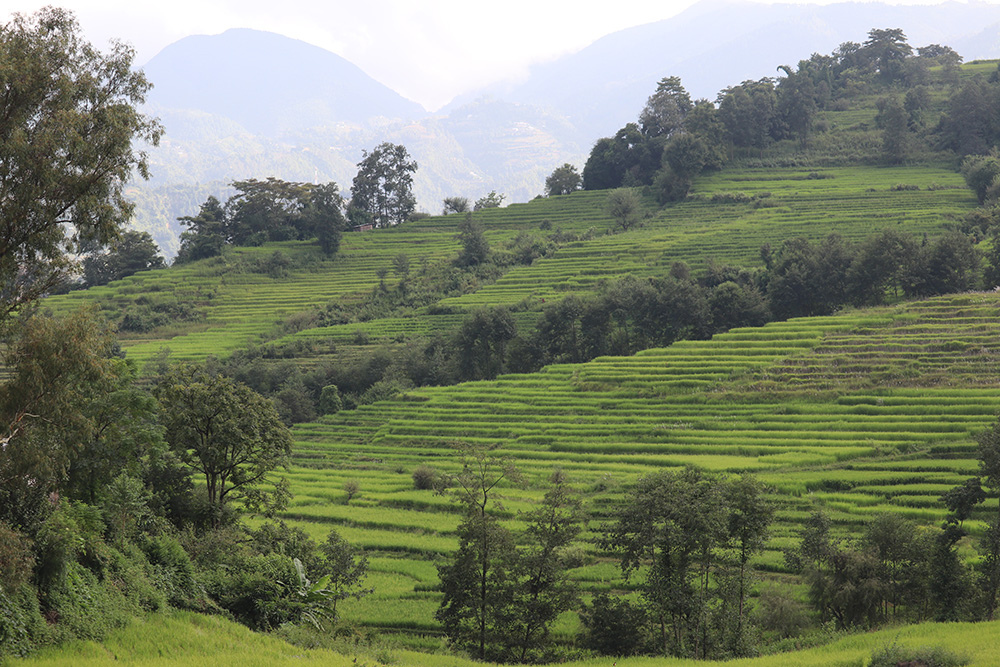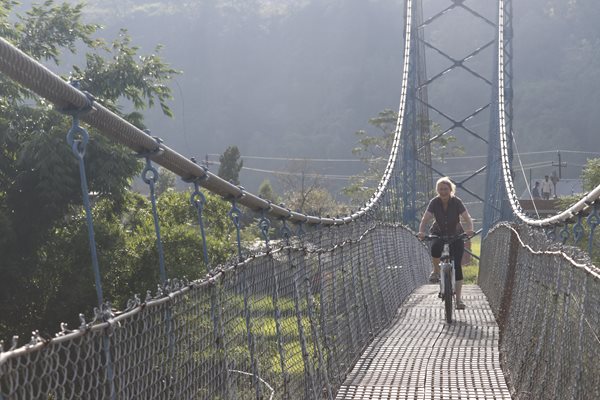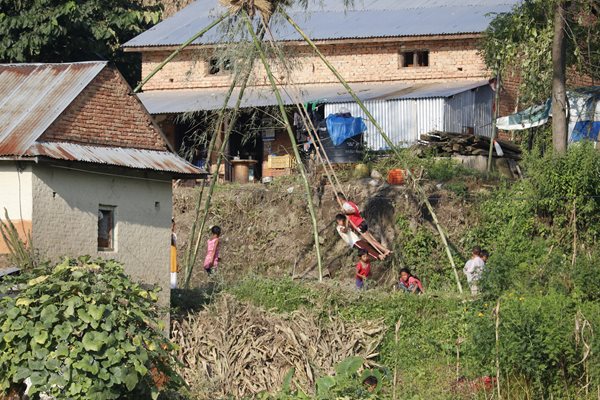As our Qatar Airbus came in to land last weekend, I was astonished to see how many high-rise buildings had grown up in Kathmandu during the two decades I’ve been away. While the monarchy existed, no-one was allowed to build higher than the palace but clearly that rule no longer applies once the king was toppled. The young man who sold me a local sim was animated on the subject. ‘Our memories are so short here in Nepal. After the earthquakes, everyone agreed that no more multi-storey buildings should be allowed, but now look.’ He gestured out through the door. A ten-floor concrete office-block towered over his little shop. Modern buildings are better designed to withstand earthquakes but it still seems craziness itself to build so high.
We’re looking for a flat to rent and Ram (an agent) has been taking me on the back of his motorbike – weaving in and out of traffic coming at us from all directions – to look at houses and apartments. In one, I looked out at first enjoying the view from the 12
th floor of a 15-floor edifice, but then a horrifying image hit me – of the whole thing collapsing as the earth shook. We’ve settled on a flat in a three-storey house instead.
Building and repair work is going on apace, but in many ways Kathmandu seems little changed since I was last here. There are still plenty of pot-holes in the roads, footpaths are missing, spaghetti-tangles of live electricity cables dangle down to street level. Even if the city feels more prosperous, there are fewer people on the street and there are more employment opportunities these days.
We hired bikes yesterday and headed out south towards Bungamati – a village with a reputation for beautiful wood carving. I remember visiting with Alex and little David years ago and there’s a picture of us sitting in the main square in
A Glimpse of Eternal Snows.
Once we’d crossed the ring road we left tarmac behind and took a series of muddy footpaths which were slippery from overnight rain and slithered and bumped rather ineffectually while locals either patiently waited for us to pass, sympathised at the difficulty of the terrain or laughed at us. Small motorbikes and even old men on foot often made much better progress than I did.
It was worth working up a sweat though as the end-of-monsoon scenery is just lovely. Growing rice is such a rich green and the terracing of the paddy fields make superb swirling shapes on the hillsides.
We’re right in the middle of the biggest of the Nepal festivals, Dasain, as important locally as Christmas is in the UK. It is a time when families feast together and those who have moved to the big cities or even abroad come home to catch up. Temples are decorated, homes freshly painted and, traditionally, swings are erected for children to enjoy. They are constructed with giant bamboo and the older kids reach terrifying heights. It was brilliant to see such a
lingiping just outside Bungamati: childish shrieks rang out and mitigated – a little – the sad experience of seeing how hard the village had been hit by the earthquake. Innumerable homes were destroyed and the Rato Machendrinath temple is just a pile of bricks.
 |
| Rebuilding in Patan city sometimes looks precarious |
 |
| Brimming rice-fields near Pharping inside the Kathmandu Valley (by Simon Howarth) |
 |
| One of several "footbridges" across the Bagmati River. This is modern but the first we crossed was made in Aberdeen in 1903 and is still strong enough for motorbikes to use. Photo by Simon Howarth. |
 |
| The traditional lingiping made for the holiday season (photo by Simon Howarth). |